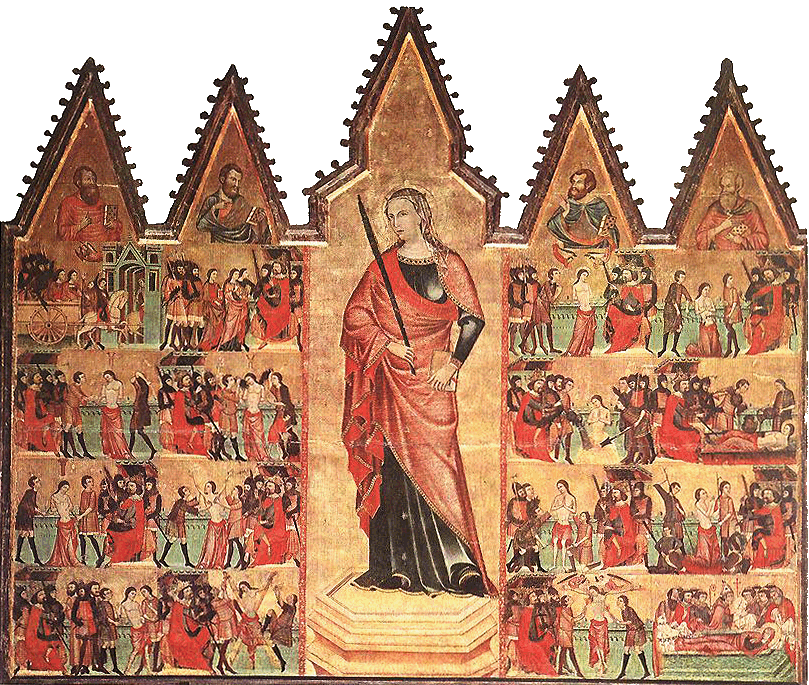Altarpiece of St. Eulalia

1350
Tempera on panel
Cathedral of Palma de Mallorca
The portrait of St. Eulalia with her book and palm branch is flanked by panels illustrating her passion. The incidents in the panels include most of what we find in Prudentius, the Cantilène, and the vita in the Acta Sanctorum (which I shall abbreviate AASS). But some innovations may be from a later vita that extended the story. For this page, I will call that vita "N."
Left side, top to bottom:
-
On the left, from N, she arrives in a cart. On the right, her first challenge to the prefect (praetor in (Prudentius), praeses in AASS.
-
The beatings ordered by the prefect.
-
From N: The prefect orders Eulalia's breasts removed. This incident is seen in other legends of virgin martyrs. See, for example, St. Barbara and St. Agatha.
-
The prefect orders her placed on a rack (eculeus). The story in AASS says she is to be "suspended" on the rack, which is what is done here.
Right side, top to bottom:
-
From N, a further encounter with the prefect, assisted by a pair of angels.
-
A torture from N on the left, the fire torture on the right. In Prudentius this is the "final torture."
-
This has to be her execution following the failure of the fire torture, because in the next panel her dead body is put on a cross for the birds to devour. In Cantilèneand AASS she is beheaded, but no sword is seen here. Nor is there a dove, an almost universal feature of St. Eulalia narratives.
-
On the left, as in the Acta Sanctorum's account, the prefect orders her dead body to be placed on a cross for the birds to feed on. Apparently this order is carried out in N, but in AASS it is not, because the servants are scared off by a miraculous snowfall. (The snow is also in Prudentius and in Gregory of Tours). Two angels arrive to take St. Eulalia's soul.
On the right, the Christians of the city have rescued her body and given it a proper burial. The bishop standing at the bier would be from N.
Basically the altarpiece is a "dossal" of the type developed in the mid- to late-13th century: a single wooden panel with a tall image of a saint in the center flanked by small narrative images. But the triangular finials borrow from the conventions of contemporary polyptychs.
Read more about legends and images of St. Eulalia.
Read more about medieval and Renaissance altarpieces.
Source: Web Gallery of Art
